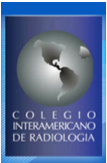Qualitative research of general practitioners’ and specialists’ expectations of the role of the radiologists
DOI:
https://doi.org/10.53903/01212095.122Keywords:
Radiology, Interdisciplinary communication, Clinical decision-making diagnosisAbstract
Objective: There is much uncertainty surrounding the current role of the radiologist in the diagnostic and therapeutic process. The purpose of this study is to obtain information directly from the different medical-surgical specialists, to know their opinion about the role of the radiologist and the aspects to be improved within this specialty. Material and methods: Participants were included based on medical-surgical speciality and years of experience. Based on the literature review, a semi-structured and anonymous interview was assembled to be completed by the participants. The custody of the data and anonymity of the information were guaranteed. Results: 56 interviews with 21 medical-surgical specialties were conducted and analyzed. Each interview was completed anonymously. According to a thematic analysis of the interviews, somthe most frequently repeated key words were identified, which in turn were grouped into five categories (tailored reports, integration, opportunity, radiologist skills and clinical participation), and finally became part of the overall concept “Teamwork”. Conclusion: Radiology is recognized by various specialists as a fundamental specialty when it comes to supporting medical decision-making, modification of therapeutic approaches, and support in surgical approaches. Within the practice of the profession, the importance of a detailed report and the ability to propose differential diagnoses was emphasized. It was recognized that to protect the specialty, achieve better performance and to be more efficient, clinical participation and integration with other specialties must be improved.
Downloads
References
Feldman A. A sketch of the technical history of radiology from 1896 to 1920. Radio Graphics. 1989;9(6):111328. https://doi.org/10.1148/radiographics.9.6.2685937
Pirnejad H, Niazkhani Z, Bal R. Clinical communication in diagnostic imaging studies: mixed-method study of pre- and post-implementation of a hospital information system. Appl Clin Inform. 2013; 4(4):541-55. https://doi.org/10.4338/ACI-2013-06-RA-0042
Colorafi KJ, Evans B. Qualitative descriptive methods in health science research. HERD Heal Environ Res Des J. 2016;9(4):16-25. https://doi.org/10.1177/1937586715614171
Bernard HR, Harvey R. Social research methods : qualitative and quantitative approa ches. Sage Publications; 2000.
Denzin NK, Lincoln YS. Handbook of qualitative research. Thousand Oaks: Sage Publications; 1994.
Guest G, Bunce A, Johnson L. How many interviews are enough? Field methods. 2006; 18(1):59-82. https://doi.org/10.1177/1525822X05279903
Doody O, Noonan M. Preparing and conducting interviews to collect data. Nurse Res. 2013;20(5):28-32. https://doi.org/10.7748/nr2013.05.20.5.28.e327.
Vivas I. Errores comunes en la interpretación oncológica. Radiologia. 2018 ; 60:53-63. https://doi.org/10.1016/j.rx.2018.01.002
Gunderman RB, Phillips MD, Cohen MD. Improving clinical histories on radiology requisitions. Acad Radiol. 2001 ;8(4):299-303. https://doi.org/10.1016/S1076- 6332(03)80498-1
Renfrew DL, Franken EA, Berbaum KS, Weigelt FH, Abu-Yousef MM. Error in radio logy: classification and lessons in 182 cases presented at a problem case conference. Radiology. 1992 ;183(1):145-50. https://doi.org/10.1148/radiology.183.1.1549661.
Boonn WW, Langlotz CP. Radiologist use of and perceived need for patient data access. J Digit Imaging. 2009 ;22(4):357-62. https://doi.org/10.1007/s10278-008-9115-2.
Troude P, Dozol A, Soyer P, Girard D, Martínez F, Montagne B, et al. Improvement of radiology requisition. Diagn Interv Imaging. 2014;95(1):69-75. https://doi.org/10.1016/j.diii.2013.07.002
Barron D, Spiegel T, Katzman GL, Haas K, Ali S. Improving clinical information on head CT requisitions from the emergency department to aid interpretation and billing efficiency. Am J Roentgenol. 2018 ;210(1):W18-21. https://doi.org/10.2214/AJR.7.18558
Hanna TN, Rohatgi S, Shekhani HN, Dave IA, Johnson J-O. Clinical information available during emergency department imaging order entry and radiologist interpretation. Emerg Radiol. 2017 ;24(4):361-7. https://doi.org/10.1007/s10140-017-1488-4
Schreiber MH. The clinical history as a factor in roentgenogram interpretation. JAMA. 1963;185(5):399. https://doi.org/10.1001/jama.1963.03060050077027.
Doubilet P, Herman PG. Interpretation of radiographs: effect of clinical history. AJR. 1981;137(5):1055-8. https://doi.org/10.2214/ajr.137.5.1055.
Schwartz LH, Panicek DM, Berk AR, Li Y, Hricak H. Improving communica tion of diagnostic radiology findings through structured reporting. Radiology. 2011;260(1):174-81. http://pubs.rsna.org/doi/10.1148/radiol.11101913
Khorasani R, Bates DW, Teeger S, Rothschild JM, Adams DF, Seltzer SE. Is termi nology used effectively to convey diagnostic certainty in radiology reports? Acad Radiol. 2003;10(6):685-8. doi: 10.1016/s1076-6332(03)80089-2
Rosenkrantz AB. Differences in Perceptions Among Radiologists, Referring Phy sicians, and Patients Regarding Language for Incidental Findings Reporting. Am J Roentgenol. 2017 ;208(1):140-3. https://doi.org/10.2214/AJR.16.16633
Ramírez J, Rodríguez C, Quiroz Ó, Motta G. La comunicación del radiólogo con médicos tratantes y pacientes. Acta Médica Grupo Ángeles. 2007;5(4):228-32
Wallis A, McCoubrie P. The radiology report — Are we getting the message across? Clin Radiol. 2011;66(11):1015-22. https://doi.org/10.1016/j.crad.2011.05.013
Bosmans J, Schrans D, Avonts D, Maeseneer J De. Communication between general practitioners and radiologists: opinions, experience, promises, pitfalls. J Belgian Soc Radiol. 2014;97(6):325. http://doi.org/10.5334/jbr-btr.127
Glazer GM, Ruiz-Wibbelsmann JA. The invisible radiologist. Radiology. 2011;258(1):18-22. https://doi.org/10.1148/radiol.10101447.
Kemp JL, Mahoney MC, Mathews VP, Wintermark M, Yee J, Brown SD. Patient centered radiology: Where are we, where do we want to be, and how do we get there? Radiology. 2017;285(2):601-8. https://doi.org/10.1148/radiol.2017162056
Hosny A, Parmar C, Quackenbush J, Schwartz LH, Aerts HJWL, Edu HH. Artificial intelligence in radiology HHS Public Access. Nat Rev Cancer. 2018;18(8):500-10. https://doi.org/10.1038/s41568-018-0016-5
Thrall JH, Li X, Li Q, Cruz C, Do S, Dreyer K, et al. Artificial intelligence and machine learning in radiology: Opportunities, challenges, pitfalls, and criteria for success. J Am Coll Radiol. 2018;15(3):504-8. https://doi.org/10.1016/j.jacr.2017.12.026
Downloads
Published
How to Cite
Issue
Section
License
Copyright (c) 2022 Revista Colombiana de Radiología

This work is licensed under a Creative Commons Attribution-NonCommercial-ShareAlike 4.0 International License.
La Revista Colombiana de Radiología es de acceso abierto y todos sus artículos se encuentran libre y completamente disponibles en línea para todo público sin costo alguno.
Los derechos patrimoniales de autor de los textos y de las imágenes del artículo como han sido transferidos pertenecen a la Asociación Colombiana de Radiología (ACR). Por tanto para su reproducción es necesario solicitar permisos y se debe hacer referencia al artículo de la Revista Colombiana de Radiología en las presentaciones o artículos nuevos donde se incluyan.








